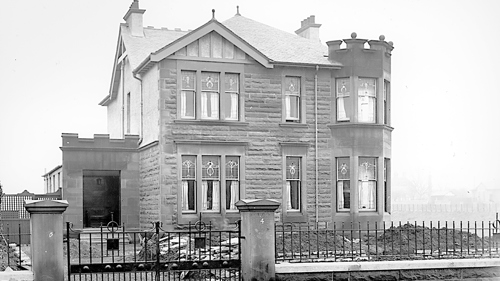Historic House Prices in Glasgow - Times Past

In partnership with the Glasgow Times, our archivists are exploring Glasgow's fascinating history. This week, Michael Gallagher writes about Glasgow's historic house prices.
When house prices in Glasgow rocketed last year and rose well above the UK average, the city was declared a housing hotspot by no lesser authorities than television’s Kirstie and Phil.
Fifty years ago, Glasgow was in the midst of a similar property boom. So much so that the Glasgow Herald was compelled to write a series of articles on what it called the “house price crisis”.
Between 1970 and 1972, the cost of property soared by as much as 60%. A 3-apartment flat in leafy Hyndland sold for around £2850 in 1970 but two years later would fetch £4500, whilst the price of a villa in Pollokshields increased from £9000 to £14,000 over the same period. “Never, until the last two years, have we seen prices rise so noticeably,” said one estate agent. “The price explosion has affected every kind of property”.
The reasons for the boom were many and varied, but much was down to Glasgow’s distinctive housing situation. Only a quarter of houses were owner-occupied (compared with half in Edinburgh) and a small proportion of new houses built since the war were intended for owner-occupation, with the greater part being municipal homes.
This figure remained largely the same until the late 1980s and the historical trend also shows that it was unusual for Glaswegians to own their own home. In 1861 owner-occupiers represented only 1.6% of the housing stock of the entire city and little changed in half a century: by 1911 the figure was just 1.8%.
Renting was by far the most common arrangement and homeownership was seen as an unnecessary luxury for most. The majority of properties in Glasgow were owned by a relatively small number of people or trusts and managed by professional house factors, and this practice played a significant role in the city’s housing market. It meant that most property owners were not active participants in this market, which impacted development and growth.
The lack of both private housing on the market and availability of land to build on pushed up prices and forced house hunters to migrate beyond the city’s boundaries. Even then, prices rose rapidly in the early 1970s. A 5-apartment house in Newton Mearns built for £6075 in 1971 sold for £9600 the following year.
One developer blamed the difficulty of obtaining planning permission for this increase, whilst another put it down to a settlement to increase the wages of building workers, which he claimed added £1000 to the cost of a home straight away.
House prices in Glasgow stayed largely the same from the end of the Second World War until the early 1960s, when they began to rise gradually before spiking in the early 1970s.
Whilst this rapid increase was a shock for prospective buyers at the time, it’s worth bearing in mind the wage context. The national average salary was £1900, with the average price of a Glasgow home close to half of that, at £1000. It’s a different picture today!
